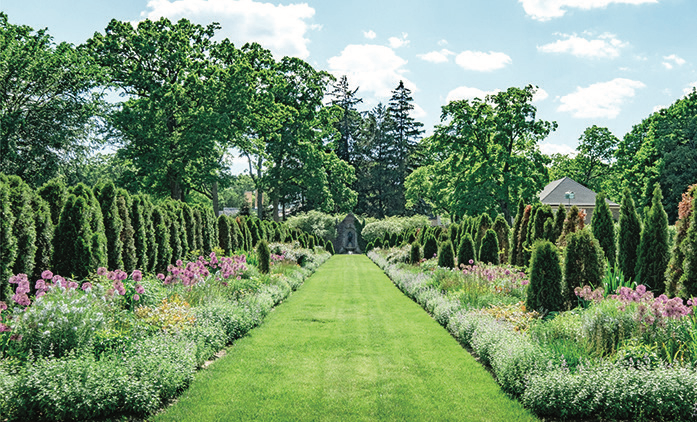
Features
Architectural Lake Forest: a New Preservation Foundation Guide
In the early 1990s the Lake Forest Preservation Foundation published a guide to Lake Forest’s National Register Districts and Landmarks. Three decades later the organization again is publishing a guide, this time with more than three times as many sites in five Historic Districts. In the 1990s, Lake Forest had two historic districts on the National Register; today there are five districts cited, and many individually landmarked properties.
The 160-page, full-color book’s title varies only slightly from the 1990s original: Architectural Lake Forest: A Guide to National Register Historic Districts and Properties in Lake Forest, Illinois. Authored by local archivist, historian, and preservationist, Arthur H. Miller, it fills a niche in the ever-expanding list of books about Lake Forest since the 1980s: It is a history lesson, an elegant reference manual, a testament to the value of preservation, and a guide for touring on foot, by bicycle, or by car. While many of the sites are estate era and area properties, two of the historic districts specifically address middle-class residences.
The book features 261 Lake Forest properties that are visible from the street, including houses, businesses, churches, institutional buildings, private gardens, and public parks. These points of interest are either in a district that is on the National Register of Historic Places or are themselves National Landmarks or locally designated Lake Forest Landmarks. It is divided into seven geographic chapters, with each including an introduction, an essay about a property, and an original line drawing by artist Alice MoultonEly. Chapters also include neighborhood maps and dozens of photos taken in the spring of 2022 by photographer Marcus Norman, with concise captions.
The main body of the book, about two-thirds, is followed by an address index also listing references to each by abbreviations, keyed to a bibliographic list of architectural sources. Some entries have fuller bibliographic listings, specific to them, as well. For more well-known places, this section pulls together the most recent sources, with references to locations of archived material.
The book also includes a glossary of architectural and landscape architectural styles, with information on the rationales for the dialectics between historicist or antimodern styles and modernist antihistoricist styles and directions, between national styles, and between formal and informal, exotic-plant and native species approaches to local landscapes and gardens.
Examples from Marcus Norman’s photography are shown in smaller versions to illustrate the various types. A main point, though, is that most of the houses and gardens are one-off, bespoke designs, not so much aligning with standard French, English, and Italianate types, especially by the late 1880s. Instead, they are riffs on these styles by academically trained professionals, adapting to the sites and clients, and offering variations on broadly described style types. Finally, there is an index of architects and landscape architects who are mentioned in the seven chapters.
Architectural Lake Forest is offered for sale through the Foundation website www.LFPF.org or call 847-234-1230 for more details.
This book review is reprinted by permission from the Lake Forest Preservation Foundation Fall 2022 Newsletter.
Arthur Miller, a Northwestern humanities Ph.D. and most recently author of Architectural Lake Forest, 2022, a frequent contributor of articles in books and co-author or co-editor of books about Lake Forest. He is Emeritus Archivist and Librarian for Special Collections, Lake Forest College.








